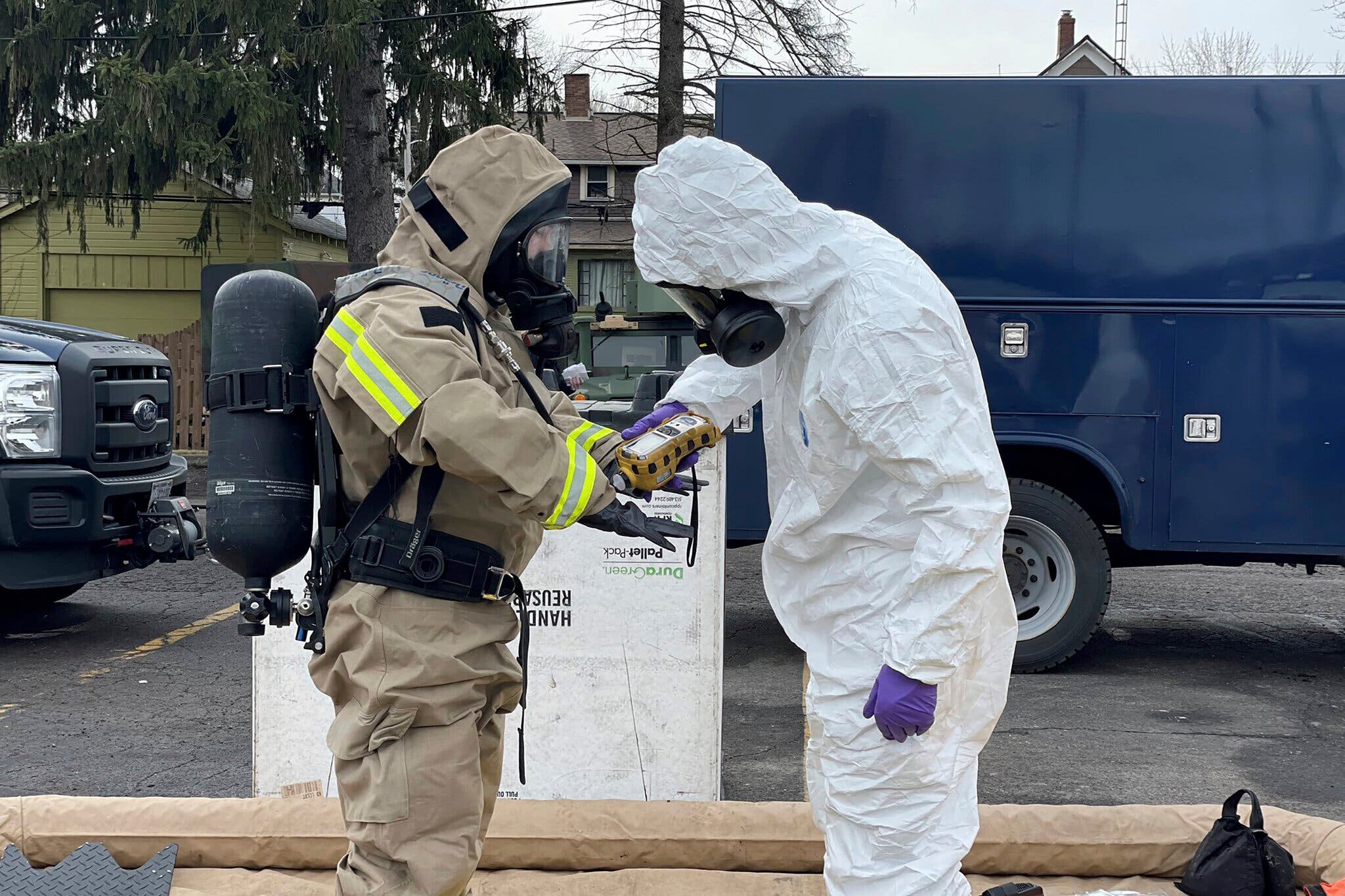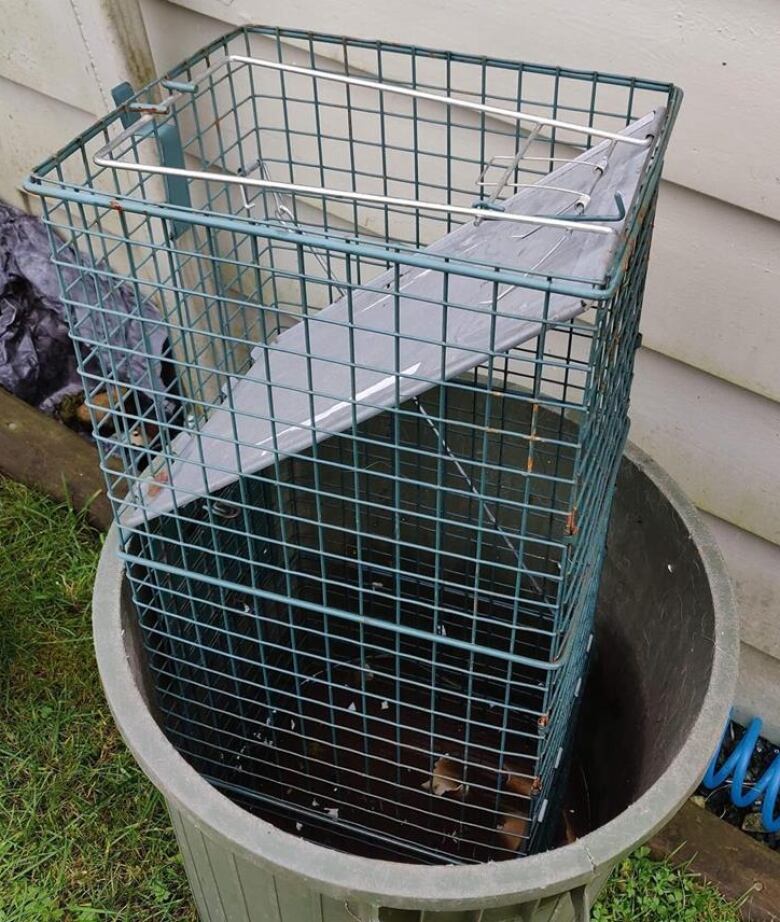Investigation Reveals Lingering Toxic Chemicals From Ohio Train Derailment In Buildings

Table of Contents
Types of Toxic Chemicals Found in Buildings
The derailment released a cocktail of hazardous substances, many of which have been discovered inside buildings in the vicinity. This persistent contamination underscores the severity of the environmental disaster and the long-term implications for public health.
Vinyl Chloride Contamination
Vinyl chloride, a known carcinogen, is a particularly concerning chemical found within several buildings. Exposure to vinyl chloride, even at low levels, can lead to a range of serious health problems.
- Specific health risks associated with vinyl chloride exposure: Liver cancer, brain cancer, lung cancer, leukemia, and other circulatory system disorders. Long-term exposure can also cause liver damage and various neurological issues.
- Detection methods used: Air sampling, soil testing, and water analysis have been employed to detect the presence of vinyl chloride in buildings. Advanced techniques, like gas chromatography-mass spectrometry (GC-MS), are used to identify and quantify the levels of contamination.
- Specific buildings impacted: Residential homes, commercial properties, and even some schools have shown evidence of vinyl chloride contamination, indicating widespread dispersion of the chemical following the derailment. The extent of the contamination varies depending on factors such as proximity to the derailment site and prevailing wind patterns.
Other Hazardous Substances
Beyond vinyl chloride, other hazardous substances released during the Ohio train derailment have been detected in buildings. These include, but are not limited to:
- Butyl acrylate: Exposure can cause respiratory irritation, skin sensitization, and eye irritation.
- Ethylene glycol monobutyl ether: This chemical can irritate the skin, eyes, and respiratory system. It is also associated with developmental toxicity.
- Other chemicals: The full extent of the chemical release is still being investigated, and the complexity of testing for all released substances makes it a challenging task. Further testing is necessary to comprehensively understand the full range of contaminations. The levels of detection for these chemicals vary and are subject to ongoing investigation.
Impact on Residents and Businesses
The presence of lingering toxic chemicals from the Ohio train derailment has had profound impacts on the health, economy, and social fabric of the affected communities.
Health Concerns and Symptoms
Residents and workers in the area have reported a range of health concerns since the derailment. The correlation between these symptoms and chemical exposure is currently being investigated through ongoing epidemiological studies.
- Reported symptoms: Headaches, dizziness, nausea, respiratory problems (coughing, shortness of breath, wheezing), skin rashes, and eye irritation are among the frequently reported symptoms.
- Ongoing health studies: Several independent and government-funded health studies are underway to determine the long-term health effects of exposure to the released chemicals. These studies will help to fully assess the extent of the health impacts.
- Psychological impact: The stress and anxiety resulting from the derailment and the ongoing health concerns have had a significant psychological toll on the community.
Economic and Social Consequences
The Ohio train derailment has caused significant economic and social disruption to the affected communities.
- Business closures and property devaluation: Businesses have closed due to contamination concerns, and property values have plummeted, impacting the local economy severely.
- Cost of remediation and cleanup efforts: The cost of cleaning up the contamination and providing health support to residents will be substantial, placing a heavy burden on taxpayers and local budgets.
- Community displacement and relocation challenges: Some residents have been forced to relocate due to the contamination, creating further social and economic disruption.
Government Response and Cleanup Efforts
The government's response to the Ohio train derailment and the subsequent chemical contamination has been a subject of considerable scrutiny.
Investigation and Testing Procedures
Several government agencies, including the Environmental Protection Agency (EPA), are involved in the investigation and cleanup efforts.
- Government agencies involved: The EPA, along with state and local agencies, are responsible for overseeing the investigation and testing of buildings for contamination.
- Testing methodologies and limitations: The testing methods used have limitations, and the sheer number of chemicals released make comprehensive testing a complex undertaking. Transparency in reporting results and sharing methodology is crucial to building public trust.
- Transparency and communication: Clear and consistent communication from the government regarding the extent of the contamination, the ongoing investigations, and the remediation plans is essential to maintaining public confidence.
Remediation and Long-Term Solutions
Remediation efforts are ongoing, but they present significant challenges.
- Remediation techniques: Techniques such as air scrubbing, soil removal, and building decontamination are being employed to mitigate the contamination.
- Plans for future monitoring and testing: Long-term monitoring and testing are crucial to ensure the safety of residents and prevent future health problems.
- Government funding allocated for cleanup: The government has committed funding to the cleanup efforts, but the amount may need to be increased depending on the full extent of the contamination.
Conclusion
The investigation reveals a significant presence of toxic chemicals from the Ohio train derailment within local buildings, posing serious health and economic risks for residents and businesses. The lingering effects of the Ohio train derailment toxic chemicals underscore the urgent need for comprehensive remediation, long-term health monitoring, and robust safety regulations. We must demand accountability and advocate for thorough testing and remediation of all affected buildings to ensure the safety and well-being of the community. Further research on the long-term effects of Ohio train derailment toxic chemicals is crucial. Continue to follow developments related to the Ohio train derailment toxic chemicals and advocate for stricter safety regulations.

Featured Posts
-
 Woman Claims To Be Madeleine Mc Cann Dna Test Results Released
May 09, 2025
Woman Claims To Be Madeleine Mc Cann Dna Test Results Released
May 09, 2025 -
 Tech Billionaires 194 Billion Loss The Cost Of Supporting Trump
May 09, 2025
Tech Billionaires 194 Billion Loss The Cost Of Supporting Trump
May 09, 2025 -
 Wynne Evans On Strictly Come Dancing Return His Official Statement
May 09, 2025
Wynne Evans On Strictly Come Dancing Return His Official Statement
May 09, 2025 -
 Investigation Launched Over 90 Nhs Staff Viewed Confidential Nottingham Attack Victim Files
May 09, 2025
Investigation Launched Over 90 Nhs Staff Viewed Confidential Nottingham Attack Victim Files
May 09, 2025 -
 Julia Wandelts Madeleine Mc Cann Claim Arrest And Investigation In The Uk
May 09, 2025
Julia Wandelts Madeleine Mc Cann Claim Arrest And Investigation In The Uk
May 09, 2025
